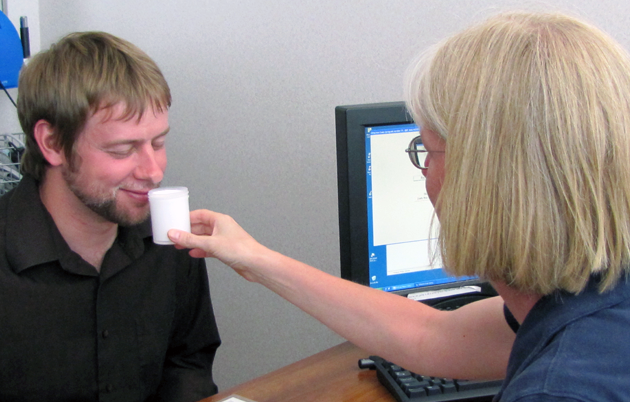Past studies have shown that a doctor sitting next to a patient’s bed, which can promote eye-to-eye interaction between both parties, has been associated with perceived improvements in patients’ understanding of their conditions as well as a sense that their clinician is spending more time with them. However, there is one problem in many hospitals: there are often no spare chairs available in the patient’s room.
The research team, led by Dr. Blair Golden, assistant professor of medicine, University of Wisconsin School of Medicine and Public Health, and inpatient hospitalist, UW Health, examined whether educating internal medicine residents on the value of sitting and adding a wall-mounted folding chair in plain sight to hospital rooms would motivate the use of chairs. The study, which was published in the Journal of Hospital Medicine, also measured whether this physician behavior changed patient perceptions.
Golden’s collaborators at Johns Hopkins School of Medicine in Baltimore studied four internal medicine units at Johns Hopkins Hospital. In two units, they installed a chair at the entrance to patient rooms and educated physicians on the value of sitting during patient interactions. In the two other units without added chairs, physicians were simply educated on the value of sitting during patient interaction.
The study showed that education alone improved sitting frequency to 15%, but that adding dedicated chairs for the clinicians, in addition to any patient or visitor chairs, improved sitting to 45%.
“It was remarkable to see how such a simple action increased an activity that we know can lead to better patient care,” Golden said.
Two hundred fifty-six patients answered a survey about their experiences in a baseline survey before any education or chairs were provided from August 2019 to January 2020. Then, after a delay due to the COVID-19 pandemic, 206 patients took surveys between October 2021 and April 2022 after the education and chairs were provided.
Patients were asked whether the resident sat, and if they sat when giving important information. Patients were also asked about other behaviors such as whether the resident spent enough time with them, checked to make sure they fully understood information, let them talk without interruption or were in a rush. Patients indicated their perceptions on a scale of 1 to 5, with 1 being never and 5 being every time.
Patient perceptions improved for the units where residents sat to talk with them, according to the surveys.
In units where residents were given only education on the value of sitting, patients reported 49% of the time residents always spent enough time by the bedside with them, compared to 73% when a chair was available. In units with education only, 67% of the time residents always checked to ensure the patient understood everything, compared to 87% when a chair was present.
Further studies could focus on larger-scale implementation of dedicated bedside chairs and education to promote their use by doctors. The researchers also want to identify and examine other factors that might contribute to patient perceptions of bedside chair use by clinicians, but this study was a revealing first step into a simple, yet potentially effective, intervention, according to Golden.
“Our data clearly showed in this study at this hospital that facilitating sitting made a difference in improving patients’ perceptions of their care,” she said.

